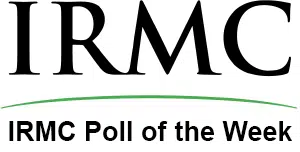By Michael K. Sauter, MD
Director, Primary Stroke Center
Indiana Regional Medical Center
Ever since the first COVID case was reported in January 2020 from samples obtained from a laboratory in Washington state, there have been questions surrounding the extent of organ system damage expected from this viral condition. As a Neurologist I can comment on the various effects of COVID-19 on the peripheral and central nervous systems. I will leave it to other specialists or health officials to comment on damage to other organ systems.
It is estimated that 58% of the US population has been infected by Covid since the sentinel event in January 2020. This has led to the deaths of 996,000 Americans making it the 3rd leading cause of death behind heart disease and cancer. This exceeds the combined mortality of Stroke, Alzheimer’s dementia, and influenza.
So among patients, how has this condition affected the nervous system in both the acute and chronic settings? This article will attempt to answer these challenging questions.
Early in the course of the pandemic it was noted that affected individuals complained of loss of taste and smell (as much as 20% of all patients according to a December 2021 review article by Dr. Misra in the journal of the American Academy of Neurology). These complaints served as warning signs of infection. While these symptoms typically last for 3 weeks, up to 25% of patients experience problems well beyond 2 months. Additional neurologic symptoms reported frequently among patients include fatigue (32%), myalgia (20%), and headache (13%). In older patients greater than 60 up to 33% experienced confusion or delirium. The most common neurologic diagnosis
(condition) is stroke which has affected 2% of the COVID population, almost twice as frequently as the non-COVID population.
Since May represents “Stroke Awareness Month” let us explore the extent of this problem as it relates to COVID patients and provide some insights into the risks as well as the need for ongoing vigilance in regards to reducing the consequences of this problem.
Dr. Richard Perry and his colleagues at the Queen Square Institute of Neurology in London published an article in the British Medical Journal in 2021 in which he described the characteristics of stroke among COVID patients versus the general population of uninfected stroke patients. These patients present with large vessel occlusions whose stroke severity is greater than the typical stroke patient leading to more severe disability at time of hospital discharge. This has contributed to a higher rate of mortality than the stroke population in general.
Dr. Tu of Singapore wrote in the Journal of the American Medical Association in 2022 that patients of all age groups (young and old) experience a heightened risk of stroke and noted that the onset of stroke symptoms can develop as late as 2 months following time of diagnosis. A study published in the Lancet medical journal in 2021 pointed that within 1 week of COVID diagnosis the risk of heart attack is 3-8 times greater than patients without COVID and the risk of stroke is 3-6 times greater than similarly non-infected patients.
Dr. Fifi wrote in Lancet Neurology in September 2020 that the risk of strokes among COVID patients is 7 times higher than among non-COVID patients suffering from the flu. Furthermore, he noted that strokes can affect a younger segment of the COVID population with 27% of affected patients aged less than 50. This is in marked contrast to the typical onset of stroke among noninfected patients whose age of onset is typically greater than 65.
So what is causing this increased blood clotting problem leading to damage to the coronary vessels and the cerebral vessels?
It appears that the increased risk of stroke is due to “thickening of the blood” due to inflammation of the blood vessel walls and due to the production and release of auto-antibodies resulting in an anti-phospholipid like syndrome. These processes promote rapid clotting of large size arteries and veins as well as small size capillaries resulting in blockage of blood flow to regions of the brain which we regard clinically as “strokes.” Patients who suffer from additional chronic diseases or lifestyle habits such as diabetes, hypertension, and tobacco abuse add to this increased of stroke.
Earlier this year the American Stroke Association reported on various epidemiological stroke risk factors at the most recent International Stroke Conference in New Orleans. A review of the national Medicare database of patients aged 65 or older noted that a COVID patient’s stroke risk is greatest within 3 days of diagnosis. That risk is highest among patients aged 65 to 74, even moreso than the group aged over 85. The possible explanation is that the “oldest old” group of Medicare patients cannot mount a robust (but harmful) auto-immune inflammatory response to COVID.
It is still estimated that up to 80% of COVID (+) or (-) strokes are preventable.
So what then are the best ways to reduce stroke risk among the young and old segments of our population?
The best way to reduce stroke risk in the setting of COVID infection is to obtain all COVID vaccinations and booster shots.
Maintaining a high level of vigilance towards the possible development of stroke following infection is of paramount importance since that contributes to identifying and reducing modifiable risk factors.
The period of stroke risk within the first 3 days of COVID diagnosis is 10 times greater than the non-infected population. Even when we extend out the stroke risk period to 2-4 weeks following diagnosis, it is apparent that COVID (+) patients have a 9% greater risk than uninfected controls.
The best ways to minimize risk of new stroke involve early presentation to the Emergency Room if new unexplained symptoms develop – at any time following COVID exposure. Just as in the preCOVID era, controlling hypertension, hyperlipidemia, diabetes, atrial fibrillation, and tobacco abuse provide the greatest protection against new strokes.






